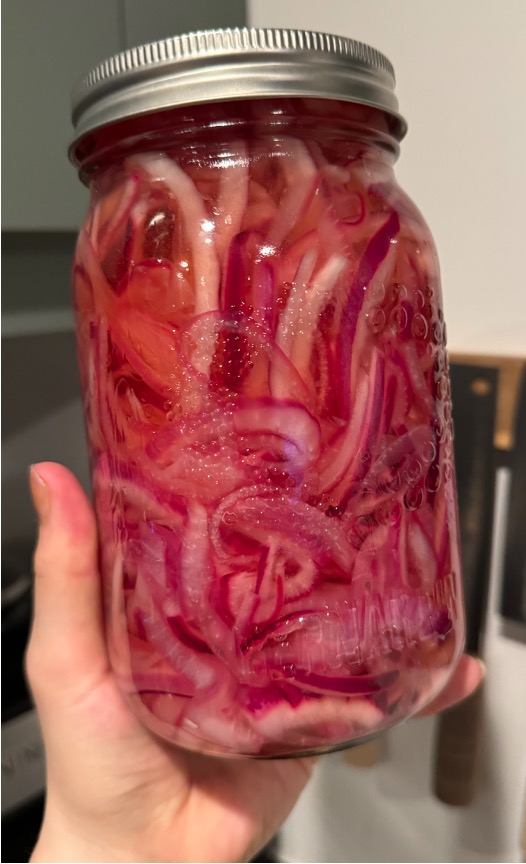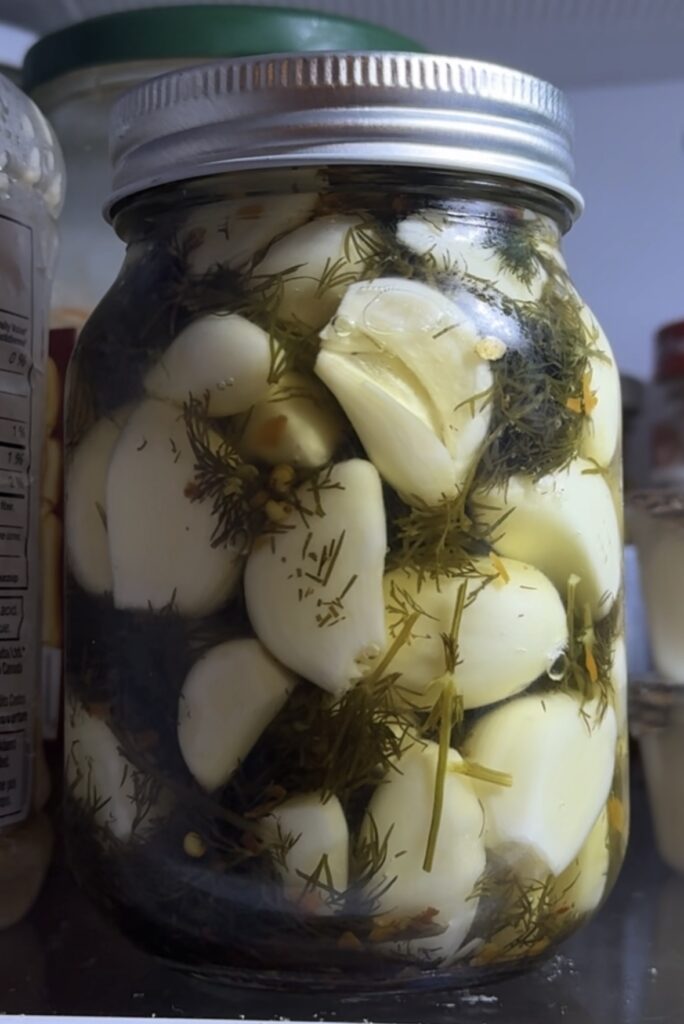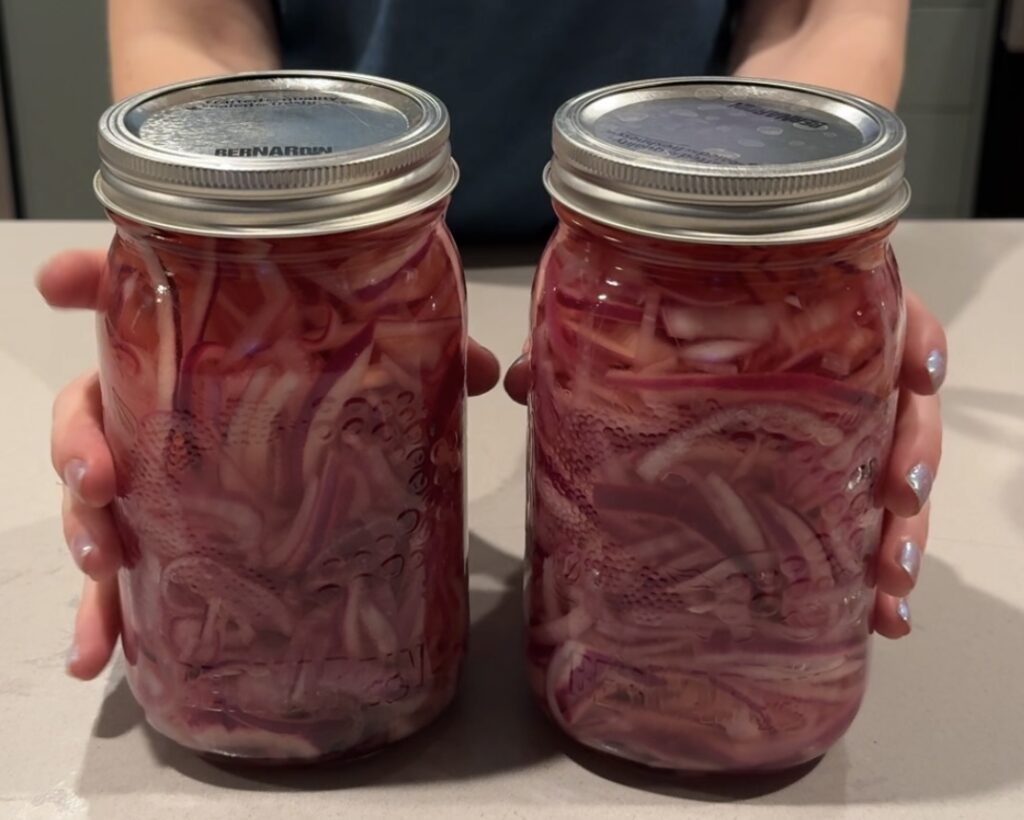
The Science of Pickling
In this article you will learn the science of pickling. Pickling is the process of preserving foods using an acidic brine or acid such as vinegar. An acidic brine is a solution made from water, vinegar, and salt. Acids like vinegar are used because they create low pH solutions that limit microbial growth. When properly pickled, foods can be preserved for up to 2 years without refrigeration.

What is pickling?
Pickling is the process of preserving foods in low pH conditions using brines, and acids such as vinegar.1 Pickling is often combined with another method, such as fermenting, canning, or just refrigerating. Pickling imparts a unique change in flavour, texture and colour of the food. The acidic conditions of pickled foods allow it to be preserved for up to 2 years without refrigeration.1
Hundreds of different types of foods can be pickled. Including vegetables like garlic, onions, carrots, and cabbage. Fruits like mango, watermelon, and pears.2 Poultry products like eggs, seafood like salmon, and meat products like pork.2
Types of Pickles
Pickled food can be broadly classified as fermented or non-fermented based on whether or not fermentation is part of the pickling process.1
Fermented Pickles:
Fermented pickles are made by submerging the food in a diluted brine solution for 1-2 weeks.3 Brine is a mixture of water and salt, this solution promotes the growth of lactic acid bacteria that prevent the growth of food spoiling bacteria.1 After fermentation the food is repacked in a vinegar solution to finalize the pickling process.3 There are two types of fermented pickles: sour and sweet.
- Sour Fermented Pickles
These pickles are made by submerging the food in a diluted brine solution then leaving the mixture for 1-2 weeks to develop lactic acid bacteria.4 These bacteria produce lactic acid which acidifies the solution and prevents the growth of food spoiling bacteria.4 This is called the fermentation phase. Here the amount of salt added determines the type and rate of fermentation that occurs.4
2. Sweet Fermented Pickles
The only difference between sweet fermented and sour fermented pickles is the addition of sugar and spices to add flavour. Sugar can also increase the rate of fermentation.3

Unfermented Pickles:
Unfermented pickles do not undergo the fermentation process. They can be produced by two methods; salt-stock pickling and vinegared pickles.4
- Salt-Stock Pickles
These pickles are prepared in a concentrated brine solution (up to 16% salt). Preservation is due to the salty conditions preventing the growth of microorganisms.4
2. Vinegared Pickles
Vinegarded pickles are made with vinegar, salt, and sometimes sugar for added flavour. Preservation is due to the acidity of the vinegar solution.4
How to Make Pickled Red Onions
Pickled red onions are a great way to introduce yourself to the science of pickling! This recipe is an example of unfermented, vinegared pickles. The red onions are pickled using a mixture of apple cider vinegar, salt, sugar, and water. See below (or watch the video) for the recipe and instructions.
You will need:
- Red onions
- Apple cider vinegar (regular white vinegar will also work)
- Water
- Salt
- Sugar
- Mason jars
- Cutting board
- Knife
- Mixing bowl
- Kettle
- Mixing spoon
- Measuring cup
Instructions:
- Cut the red onions into thin slices
- Place red onion slices in a large bowl
- Boil water in a kettle
- Pour boiling water over red onions (add enough water to cover all the onions)
- Stir the onions and let them soak in the hot water for 3-4 minutes
- Drain off the hot water
- Add the red onion slices to the mason jars
- Prepare the vinegar solution. The water to vinegar ratio is 1:1. Start by measuring 1 cup of vinegar and 1 cup of water. If this is not enough liquid for all of your red onions, double it (so 2 cups vinegar and 2 cups water). Combine the vinegar and water.
- Add 1 tablespoon of sugar and 1 tablespoon of salt for each cup of vinegar added.
- Stir the sugar, salt, vinegar, and water mixture until everything is fully dissolved.
- Pour the vinegar solution into the mason jars. Make sure you add enough liquid to fully cover all the red onions.
- Cover the mason jars with their lids and store in the refrigerator.
- Let the red onions soak in the vinegar solution for 1-2 days before eating.
*These pickled red onions are not properly canned so they should be stored in the refrigerator
References:
- Chakraborty, R., & Roy, S. (2018). Exploration of the diversity and associated health benefits of traditional pickles from the Himalayan and adjacent hilly regions of Indian subcontinent. Journal of food science and technology, 55(5), 1599–1613. https://doi.org/10.1007/s13197-018-3080-7
- Wikipedia contributors. (2024, September 25). List of pickled foods. In Wikipedia, The Free Encyclopedia. Retrieved 20:02, October 26, 2024, from https://en.wikipedia.org/w/index.php?title=List_of_pickled_foods&oldid=1247771599
- Food and Agriculture Organization of the United Nations. (n.d.). Fruit processing tool kit. https://openknowledge.fao.org/server/api/core/bitstreams/f58f2b23-a32b-4c24-a946-f8949e283760/content#
- Sudhanshu S. Behera, Aly Farag El Sheikha, Riadh Hammami, Awanish Kumar, Traditionally fermented pickles: How the microbial diversity associated with their nutritional and health benefits?, Journal of Functional Foods,Volume 70, 2020, 103971, ISSN 1756-4646, https://doi.org/10.1016/j.jff.2020.103971. (https://www.sciencedirect.com/science/article/pii/S175646462030195X)
